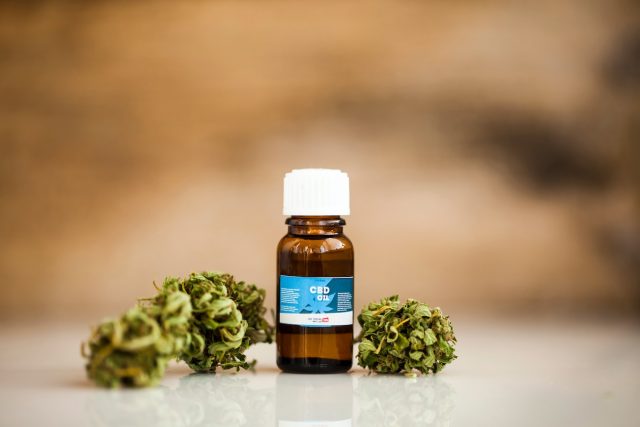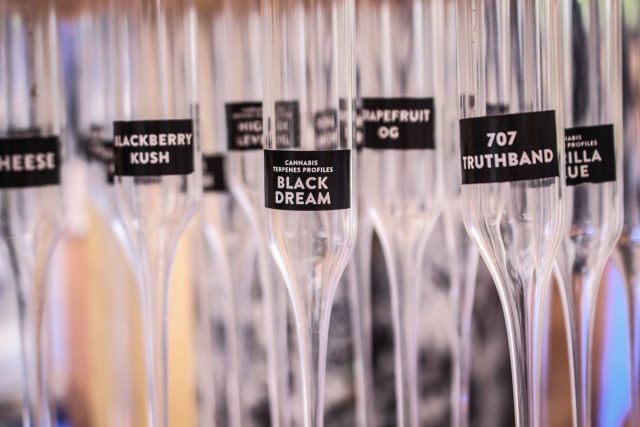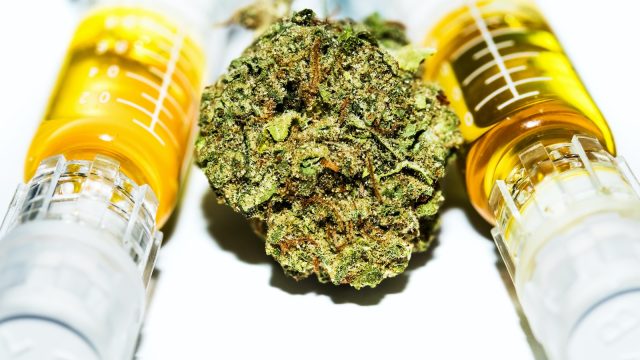Full spectrum oil (and other cannabinoid spectrums)
List of contents
When you think of cannabis, tetrahydrocannabinol (THC) may be the first cannabinoid that comes to mind. But there are other popular cannabinoids that you should be aware of, such as cannabidiol (CBD). While much of the research on CBD is new or ongoing, it can have many health benefits. And because of these potential benefits, CBD products of all kinds have flooded the market. With so much variety available, it can be difficult for consumers to separate the great products from the not-so-great ones; and much more understand the terminology of each of them.
Cannabis extracts: what makes them different?
Cannabinoids are most abundantly produced in the trichomes, the resin glands of cannabis plants. To be used in commercial products as oils or topicals, these glands must first be concentrated and then their oils separated from vegetable waxes and other non-useful materials. There are two main categories of processes to do this (solvent or solventless) and also various levels of technological sophistication within each category, although most extractions employ elements of both, such as the use of pressure or temperature.
Depending on the cannabis strain used for the process, the cannabinoid profile of the final concentrate will be different. For example, hemp extracts contain little or no THC, usually below 0.3%, so they are not psychoactive, but they also contain high levels of CBD.
In contrast, some selectively bred marijuana strains can have a CBD to THC ratio of 1:1. And depending on the purpose of the final product, different spectrums of cannabinoids can be used, either from different strains of cannabis or by custom formulation using individual compounds.
In sum, what happens to the cannabinoids after the initial extraction determines whether the extract is full spectrum, broad spectrum, or an isolate. Each term refers to the degree to which the product was processed. So let's break down the meaning of each.

Full spectrum
It means that the maximum amount of phytochemicals naturally found in cannabis are retained, including THC, along with other cannabinoids, terpenes, flavonoids and the rest of the components present in the plant. These oils are more difficult to obtain than you might expect, as most extractions lose a significant amount of terpenes and flavonoids during processing, because they are much more volatile than cannabinoids. Ethanol, low temperature, or an extremely long vacuum extraction process can produce full spectrum extracts. They tend to be quite dark in color and their flavors can be described as earthy and vegetal.
The active cannabis-extracted compounds present in full-spectrum oils work together to amplify the health benefits of each individual cannabinoid. This phenomenon is known as the ‘entourage effect’, essentially the synergy, in terms of results, that has been observed when cannabinoids are combined with other minor cannabinoids and terpenes.
For example, full-spectrum extracts from hemp come with negligible THC content, below 0.3%, although they can also benefit from the 'entourage effect'. But while it is non-psychoactive (or should we say minimally psychoactive), full-spectrum CBD from hemp can give a false-positive result during a drug test, especially if you consume high doses of CBD oil on a daily basis. That's where broad spectrum comes into play.
Broad spectrum
It applies to extractions that aim to retain a wide variety of phytochemicals, but without the THC. Because full-spectrum oils contain multiple cannabinoids, they also produce the 'entourage effect', but take psychoactivity out of the equation. It can be created by adding minor terpenes, flavonoids, and cannabinoids to a CBD isolate or by removing THC from the full-spectrum extract through distillation. In a very simplified way, full-spectrum CBD is like a mix between full-spectrum CBD and CBD isolate: it contains the full spectrum of cannabinoids except for the THC part. In this case, the extracts are slightly lighter in color, and while their flavor profiles are similar, they are not as bold or daring.
Isolated
It is the purest form of cannabinoid extraction, isolating it from its natural environment and separating it from all other ingredients, thus obtaining a 99.9% pure crystalline powder. It is created through processes that use different solvents after distillation. This additional processing steps are expensive, but due to the extreme purity of the final product, cheaper pure extracts can be used as starting material without worrying about waste. The advantage of using CBD isolate over other formats is the higher concentration of CBD per dose. However, there is no 'entourage effect': you can only benefit from the effects of cannabidiol, hence the lower price of such products and lower demand than full-spectrum or broad-spectrum CBD.

Now, what is the 'entourage effect' really about? Here we shed light on this intriguing phenomenon.
The 'entourage effect' explained
Despite the complicated name, the 'entourage effect' is quite easy to understand. It refers to the synergy achieved by all the components of cannabis. These components work together to enhance the plant's potential benefits, as each compound can amplify the therapeutic properties of the others while mitigating their potential side effects. It's a bit like baking a cake: all the ingredients work together for a delicious end result. If you leave out one or two ingredients, you can still get a similar product, but it won't be the best.
Thus, some of the additional cannabinoids in full spectrum extracts include:
- Cannabinol (CBN)
- Cannabichromene (CBC)
- Cannabigerol (CBG)
- Cannabidiolic acid (CBDA)
- Cannabidivarin (CBDV)
Due to the benefits of the whole plant, full-spectrum CBD products are priced higher than their full-spectrum siblings or CBD isolate. It is also more difficult for manufacturers to keep ratios consistent when using a full spectrum extract, again increasing the overall cost of these oils.
Before 2015, people believed that CBD isolate was more effective than full-spectrum CBD. However, in that year the myth was disproved by a study conducted by the Lautenberg Center for General Tumor Immunology in Jerusalem. In the study, researchers found that test subjects treated with full-spectrum CBD reported higher levels of relief compared to the group using CBD isolate. The scientists also concluded that the full spectrum of cannabinoids provided better effects with higher doses, while the effects of isolated CBD remained consistent with higher intake.
Terpenes: more than an aroma
When browsing through full spectrum products, you may also have noticed that they feature the health benefits of the original terpenes from the cannabis plants. Terpenes are volatile molecules that are responsible for the unique aroma profile of plants, fruits, vegetables, and spices. There are over 200 terpenes in cannabis that, like cannabinoids, also bind to different receptors in the endocannabinoid system to provide a variety of potential health benefits.
For example, one of the characteristic terpenes found in cannabis plants is beta-caryophyllene, a gastroprotective compound found in oregano, black pepper, and green leafy vegetables. This is why certain strains of cannabis are recommended for patients with gastrointestinal problems; these strains also tend to have a spicy herbal aroma.
Commercial terpenes are extracted from cannabis, and others are derived from various botanical sources or synthetically isolated in a laboratory. Regardless of their origin, terpene-based products can also be divided into three main types: isolates, blends, and strain profiles, which are formulations that emulate the terpene profile of specific cannabis strains, either from the combination of individual cannabis terpenes or terpenes from other fruits and vegetables.

As the name suggests, isolated terpenes contain a single extracted terpene in its purest form. This makes them ideal for a number of applications, as they can enhance the flavor and therapeutic effects of CBD oil, as well as dried flowers of varieties known as "light cannabis" (low THC varieties) or even hemp. industrial. Just add a few drops of terpenes to turn a mediocre bud into one with excellent aroma and flavor.
Full spectrum CBD oils means that they already incorporate terpenes. But CBD isolate oils (only CBD) do not, so they don't taste or smell like anything. So some manufacturers add terpene mixes to achieve flavors like lemon-lime, cinnamon or even spearmint, depending on the consumer's taste.
What spectrum of cannabinoids should you choose?
Both full-spectrum and broad-spectrum oils offer the benefits of the 'entourage effect'. Also, if a CBD product is relatively low dose, having a diversity of phytochemicals is even more important. Beyond their potential therapeutic effects, all of these minor players also give cannabis its depth, creating a symphony of taste and smell and ultimately making the bitterness of cannabinoid extracts more palatable.
In contrast, isolates offer standardization; are a known quantity, they are always the same. With them, growers can use a wider variety of flavorings (for example, terpene profiles from other vegetables) to make the formulation really shine; and they are much more consistent, as the consumer can also expect the same effects and sensory experience every time.
Choosing the correct starting material for the development of a cannabis product is a careful balance of values. For most commercial purposes, the purest extracts are desirable because they allow these products to be homogenized based on known and reliable effects. However, for the more wellness-focused, the benefits of a full-spectrum phytochemical concentrate are truly worth it.

Final thoughts on Full Spectrum Oil
There are many factors that can point you in the direction of one cannabis spectrum rather than the other. We are all distinct individuals; and our unique body chemistry, weight, lifestyle, or use of other substances can influence how we react to different cannabinoid profiles.
For some, full-spectrum CBD may be the best option, as it offers an 'entourage effect' without the psychoactive effects of THC. For others, a high dose of pure CBD may be enough to ease their symptoms; and others will need more THC to feel the difference.
For those who have the freedom to choose the plant source of their CBD, experts tend to highlight the benefits of choosing whole plant products when possible, whether that plant is hemp or marijuana: having THC, even the 0.3 % found in hemp-derived CBD products, is more effective than 0% THC products. Some researchers claim that equal ratios of CBD to THC turn out to be the most effective, but even a 20:1 ratio of CBD to THC can produce significantly stronger therapeutic effects.
However, there is still a lot of research to be done to measure the effectiveness of each cannabinoid spectrum and ratio, so the best thing you can do for now is a bit of trial and error to find out which option is your favourite.
----
References:
- Taming THC: Potential Cannabis Synergy and Phytocannabinoid-terpenoid Entourage Effects. Russo, E.B. (2011). British Journal of Pharmacology,
- Overcoming the Bell-Shaped Dose-Response of Cannabidiol by Using Cannabis Extract Enriched in Cannabidiol. Gallily, R., Yekhtin, Z., Hanus, J.O. (2015). Pharmacology & Pharmacy.





